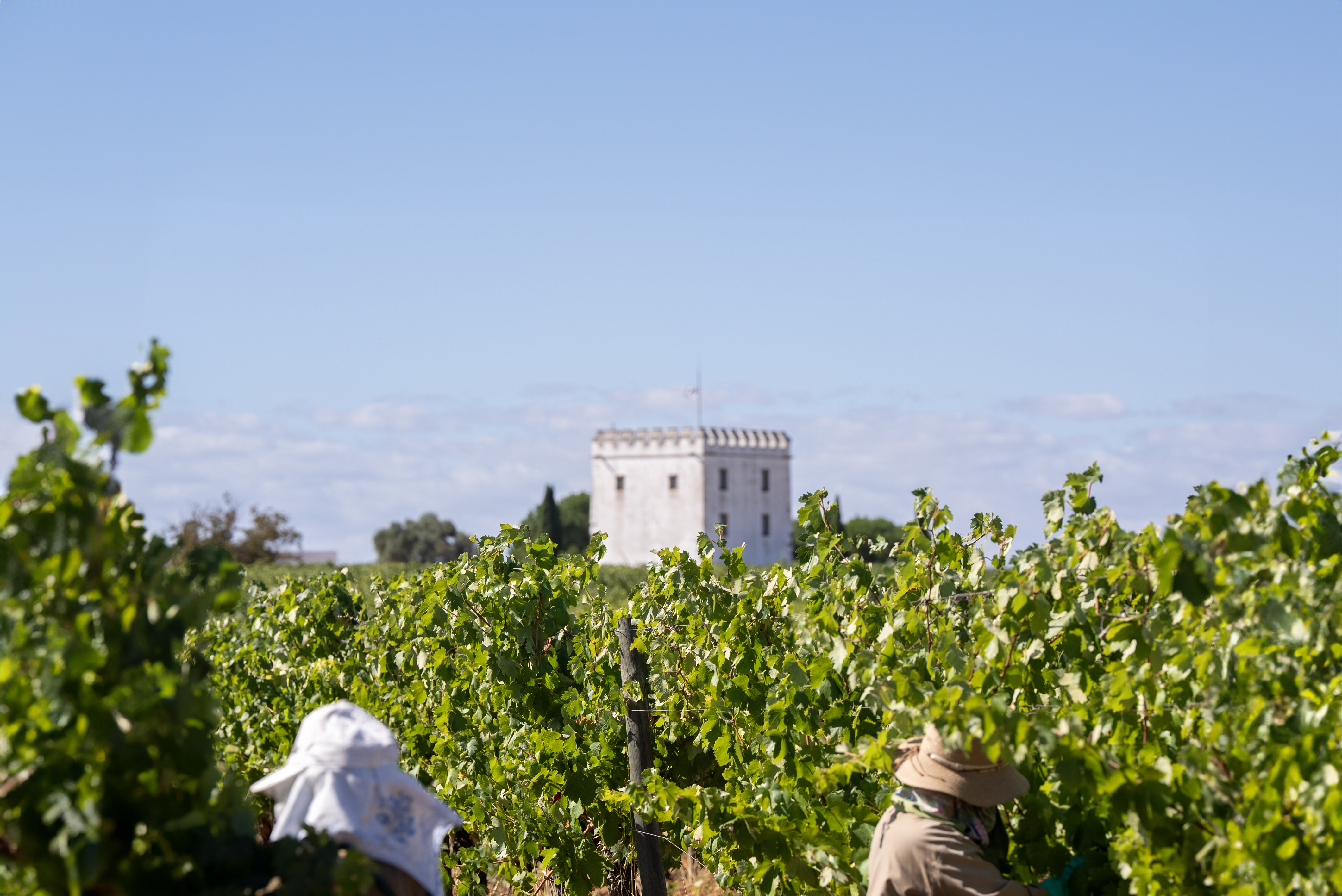General Overview of the Agricultural Year
After a more moderate and predictable 2024, vintage 2025 brought challenges marked by climatic inconsistency and sharp contrasts between seasons. December was exceptionally dry, followed by a four-month cycle, from January to April, with rainfall well above average in the Alentejo, and substantially below normal in the Douro and Vinho Verde regions. Curiously, it rained considerably more in the Alentejo than in the Douro (Baixo Corgo): 745.6 mm versus 533 mm.
A rainy spring created favourable conditions for fungal diseases, particularly downy mildew, which demanded close monitoring by the vineyard teams. The end of the season, hot and dry, saw successive heat waves, especially in the Alentejo and Douro, with more than ten consecutive days above 40 °C. The prolonged heat and lack of rain reduced yields, with berries up to 30% smaller. Even so, the vine cycle remained largely regular, and the cooler nights that followed benefited the final stages of ripening, especially for red varieties.
It was a year of contrasts, lower yields but grapes of remarkable concentration and balance. A year that tested the teams’ adaptability and demanded careful planning, reinforcing the importance of accumulated knowledge, organic farming practices, and the close coordination between viticulture and winemaking. The result is a collection of wines with strong character, reflecting the diversity and resilience of Esporão’s terroirs.

Alentejo
Herdade do Esporão
Organic Certified
At Herdade do Esporão, 2025 was a year of extremes, warmer and wetter than the 26-year average, with an annual mean temperature of 17.85 °C (up 0.92 °C) and total rainfall of 745.6 mm, about 41.5% above average. Most of this rain fell in spring, creating ideal conditions for downy mildew, which fortunately had almost no impact on production thanks to preventive measures. The organic farming regime, maintaining active ground cover later into the cycle, significantly reduced pest pressure.
Heat waves in June and July affected some varieties, such as Petite Syrah and Antão Vaz, but the response from the team was exemplary. Strict maturity control, frequent tasting in the vineyard, and harvests timed precisely at the ideal point. The harvest began on 5 August for the whites (Viosinho, Gouveio and Semillon) and on 11 August for the reds (Aragonez, Syrah and Trincadeira).
Total production reached 2,155,800 kg, around 5% below the annual average. The recent vineyard restructuring, with a reduction of 184 ha, makes direct comparison with previous years less meaningful.
White musts showed riper fruit profiles, floral intensity, and balanced acidity. The reds revealed ripe red-fruit aromas, layered structure and firm yet polished tannins. Native varieties well adapted to the Alentejo climate, Tinta Caiada, Moreto, Roupeiro and Diagalves, stood out for their resilience and quality.
In a demanding year, organic agriculture and deep knowledge of each vineyard were key to preserving freshness, balance and a clear sense of place.
Douro
Quinta dos Murças
Organic Certified
At Quinta dos Murças, 2025 was very hot and dry, with an annual average temperature of 16.6 °C (up 0.9 °C from recent years) and total rainfall of only 533 mm, 32% less than in 2024.
The year began with heavy rain, followed by a long, extremely hot summer. A heat wave in August, with temperatures above 40 °C for ten consecutive days, reduced berry size and average bunch weight. Nevertheless, thick skins and even ripening ensured excellent concentration and varietal character.
Downy mildew appeared locally but caused no significant losses, and powdery mildew was minimal due to the heat. Pests were well controlled, though there was a higher incidence of green leafhopper in west-facing parcels.
Total production reached 87,720 kg, around 42% lower than 2024, but consistent with yields before 2023. The musts showed good acidity, present tannins and balanced alcohol, promising wines of deep colour, firm structure and well-defined fruit, combining tension with elegance.
In a context of drought and heat, organic farming and attentive vineyard work were crucial to maintaining healthy, balanced vines. Touriga Nacional and Touriga Franca once again proved their resilience and quality.
Vinho Verde Region
Quinta do Ameal
Integrated Production
At Quinta do Ameal, 2025 brought milder overall temperatures, with an annual mean of 15.3 °C (slightly below recent years), but very hot summers and rainfall 59% lower than in 2024, 1,557.4 mm in total.
Intense rainfall between January and April encouraged downy mildew, particularly in plots undergoing conversion to organic production, which led to a temporary suspension of that process. Even so, the dedication of the vineyard team helped preserve grape quality and minimise losses.
Harvest began at the end of August, consistent with previous years, under mild and dry conditions. Total production reached 137,770 kg at Quinta do Ameal and 115,680 kg at Torre das Donas, around 30% below 2024.
Despite the reduced yields, quality prevailed. Concentrated white wines with pure fruit, lively acidity and long, precise finishes, showing strong ageing potential in the best parcels.
Summary
The 2025 harvest was marked by lower yields, higher concentration and an exemplary response from the teams across three regions with very different conditions. It was a year that tested limits, but also demonstrated Esporão’s enduring commitment to organic farming, sustainability, and a profound understanding of its territories.
Amid climatic challenges and finely tuned decisions, the 2025 wines express the authenticity of each place:
• In the Alentejo: balance and expressive fruit;
• In the Douro: structure and intensity;
• In Vinho Verde: freshness and precision.
A demanding year, but one full of character, true to the land, to nature, and to time itself.
